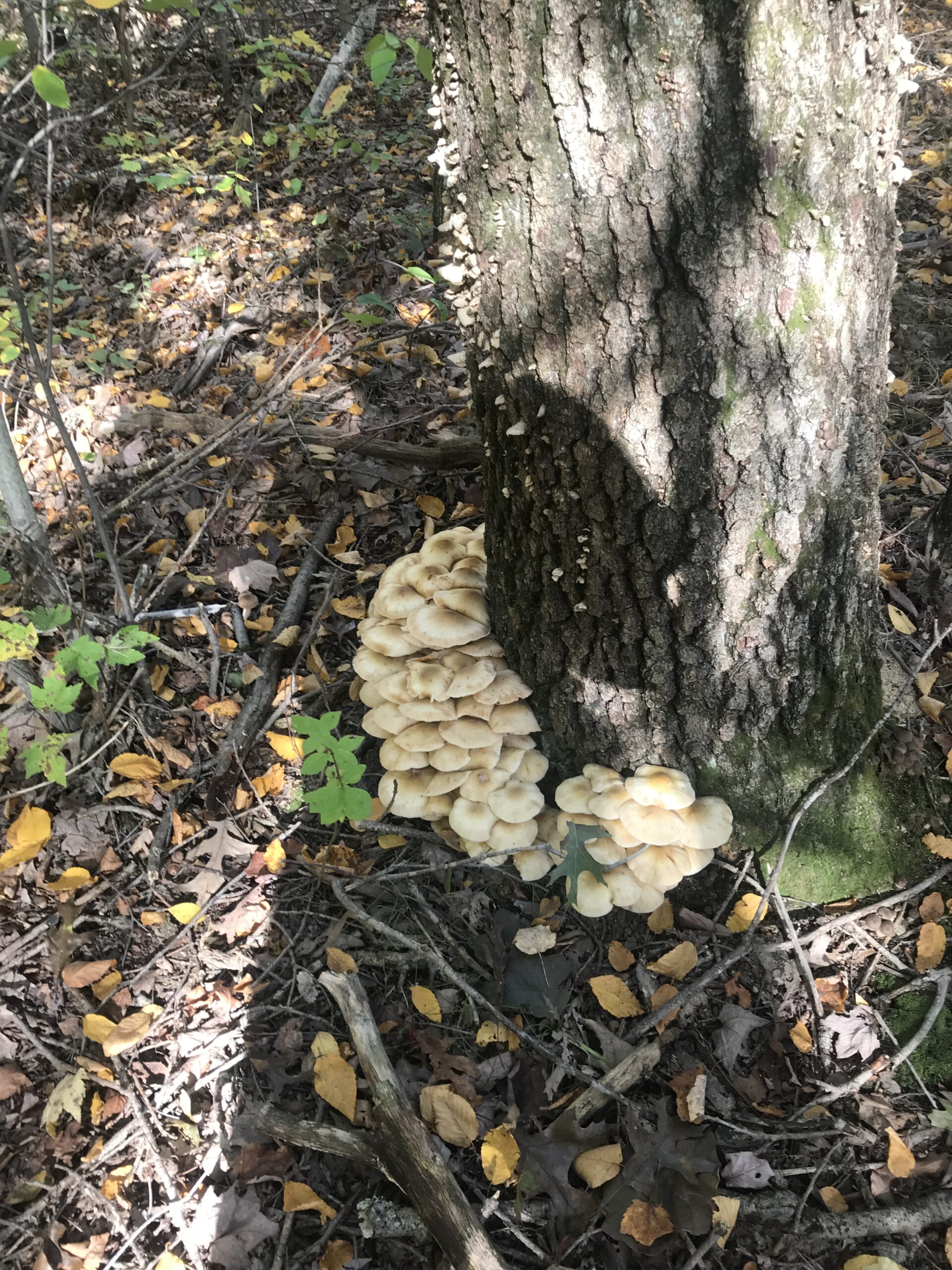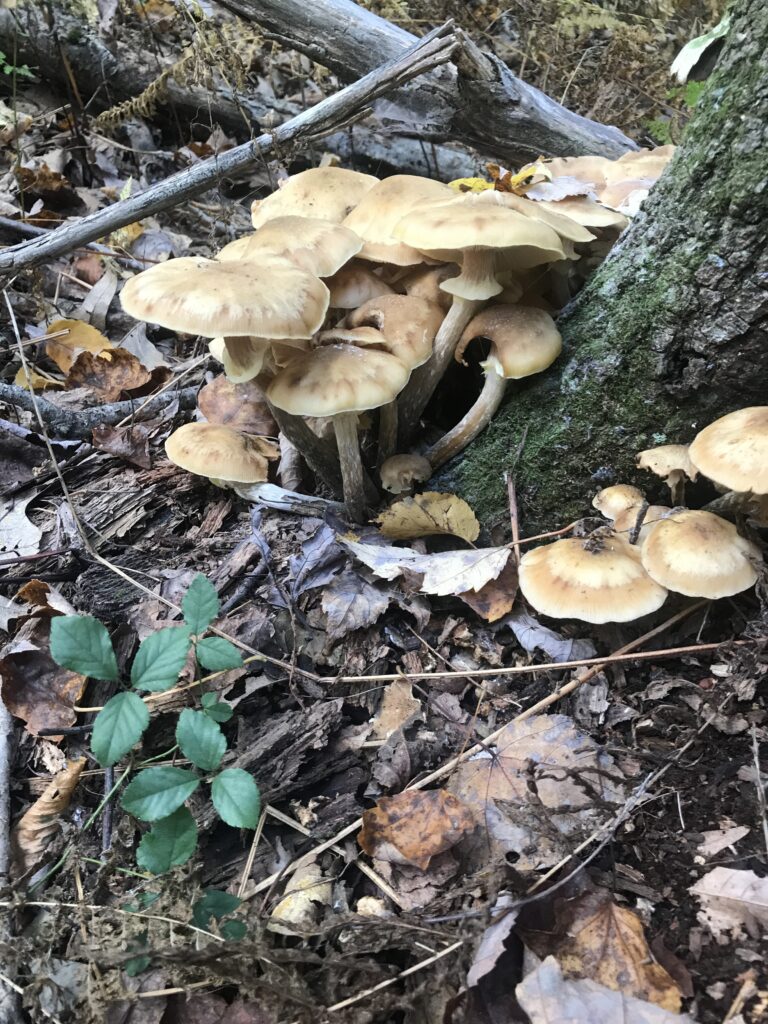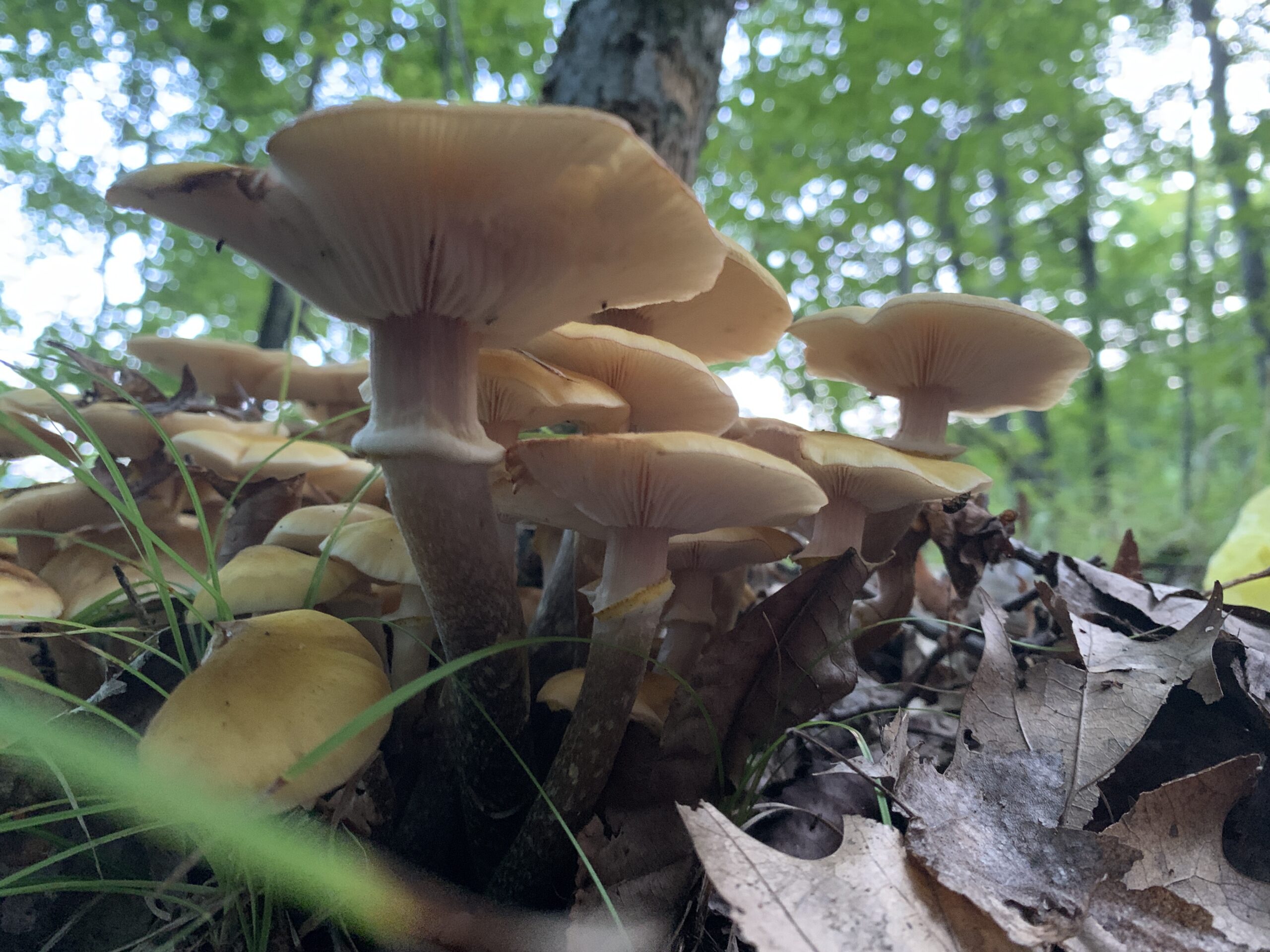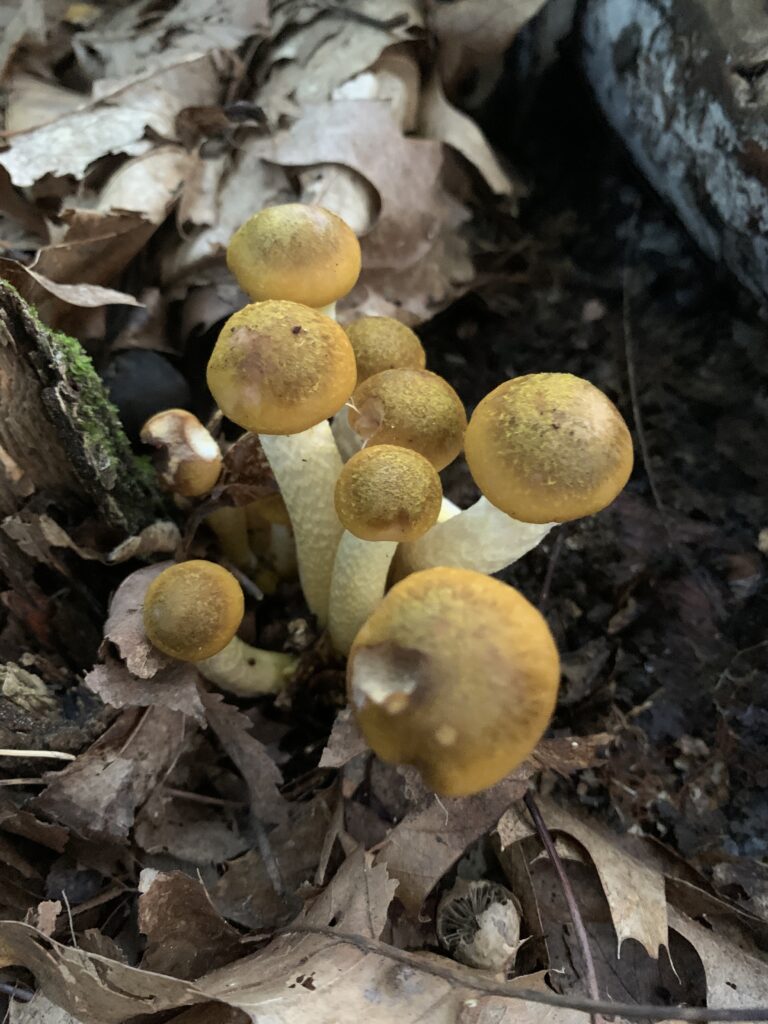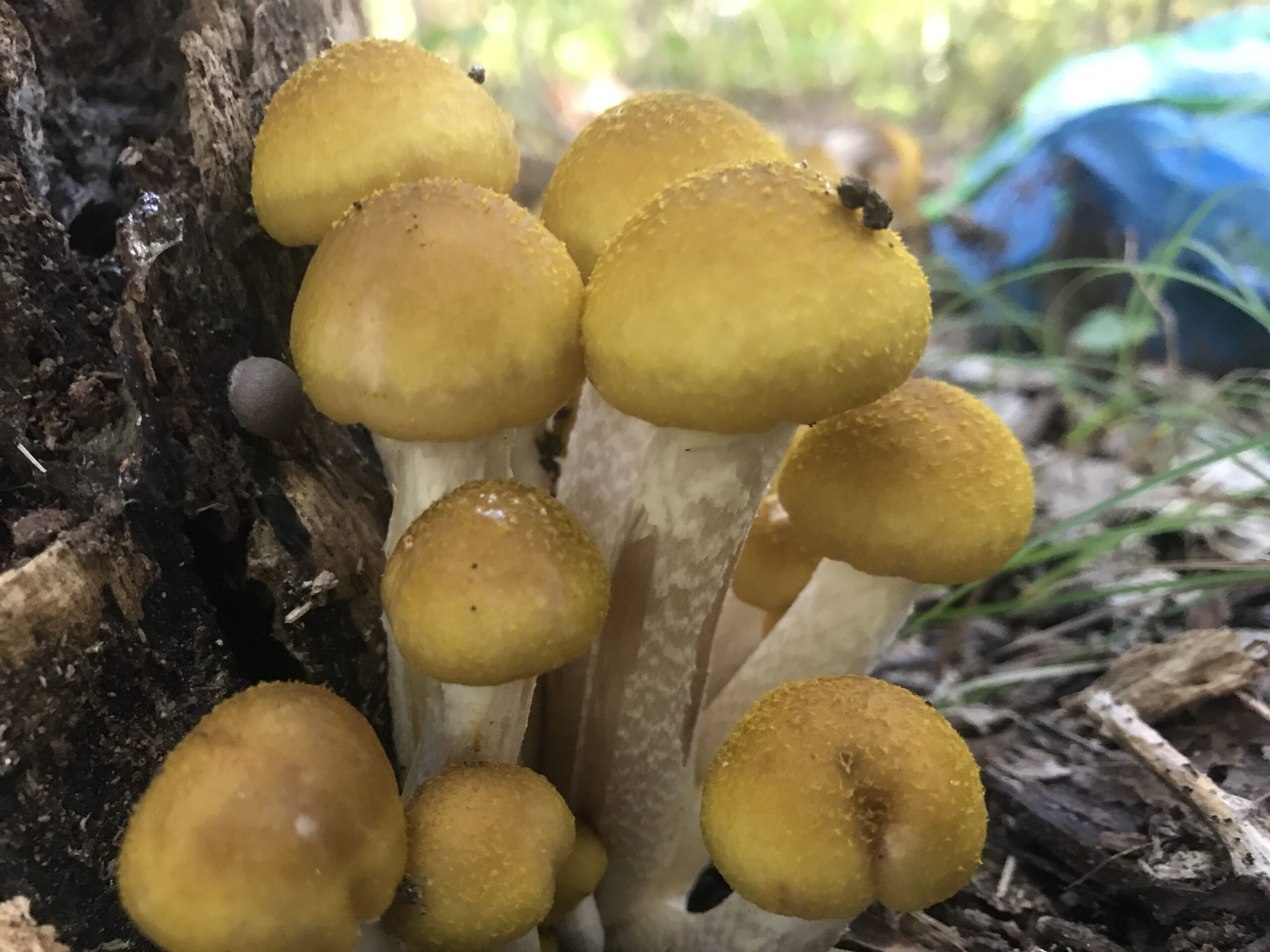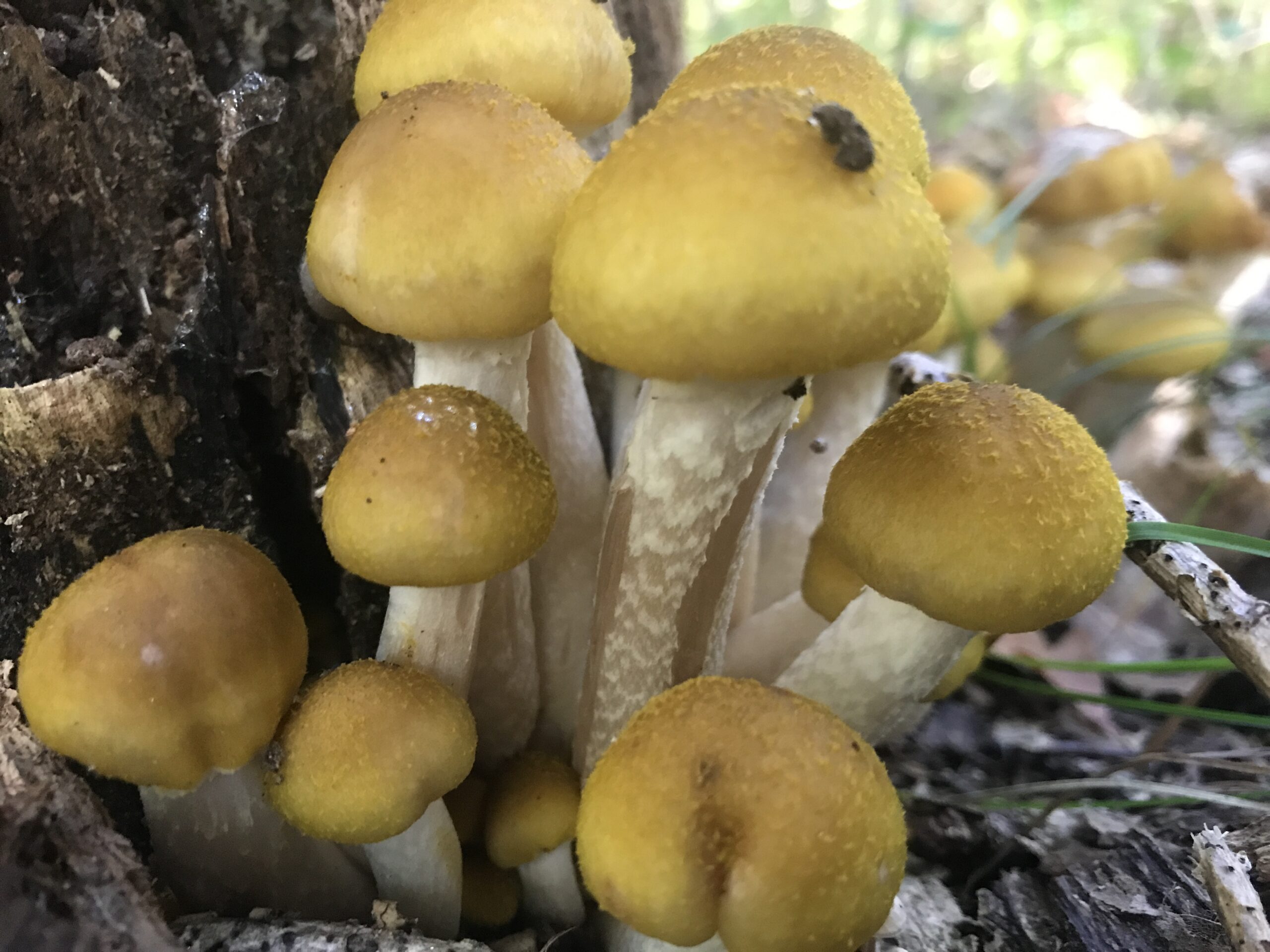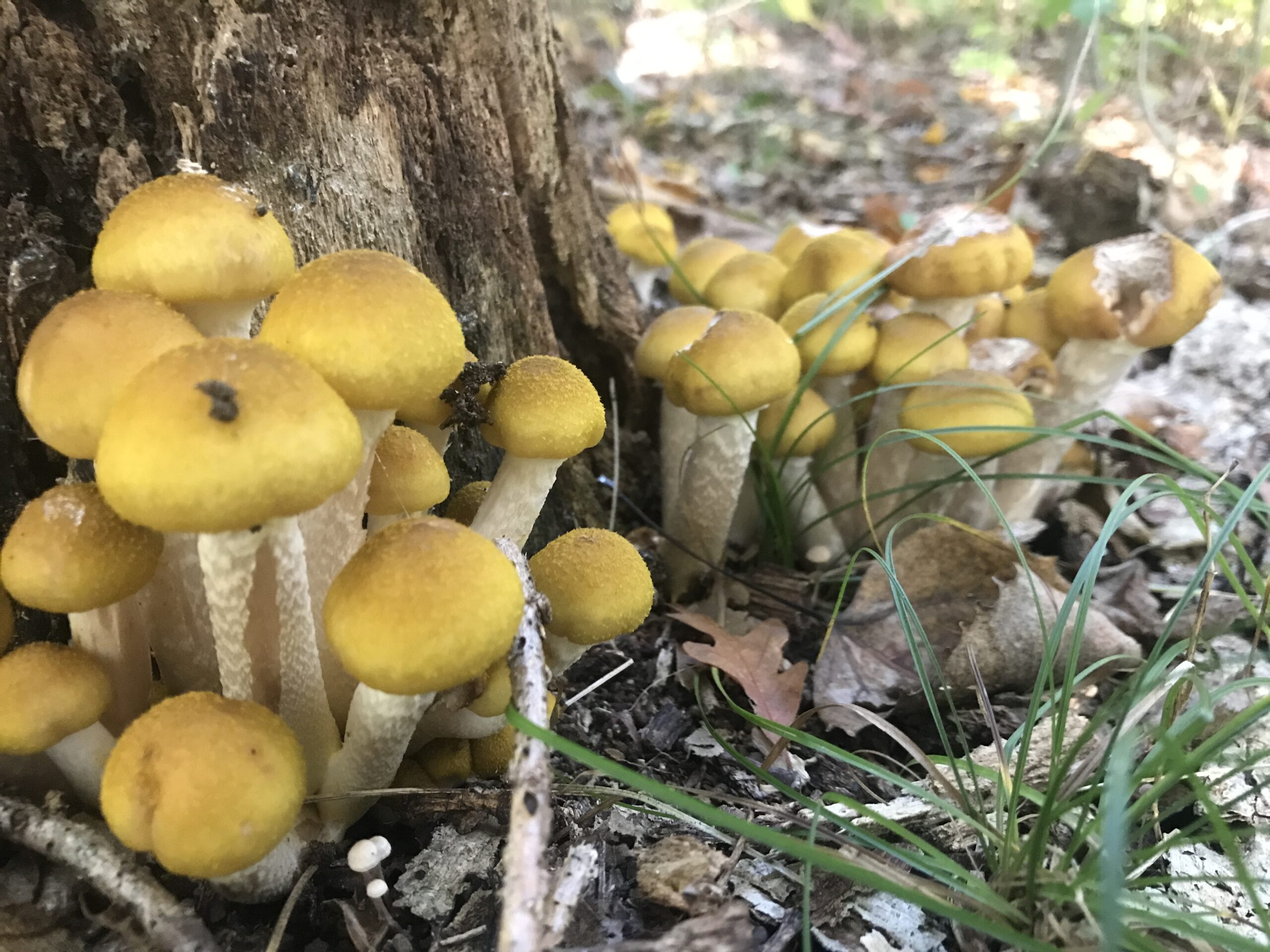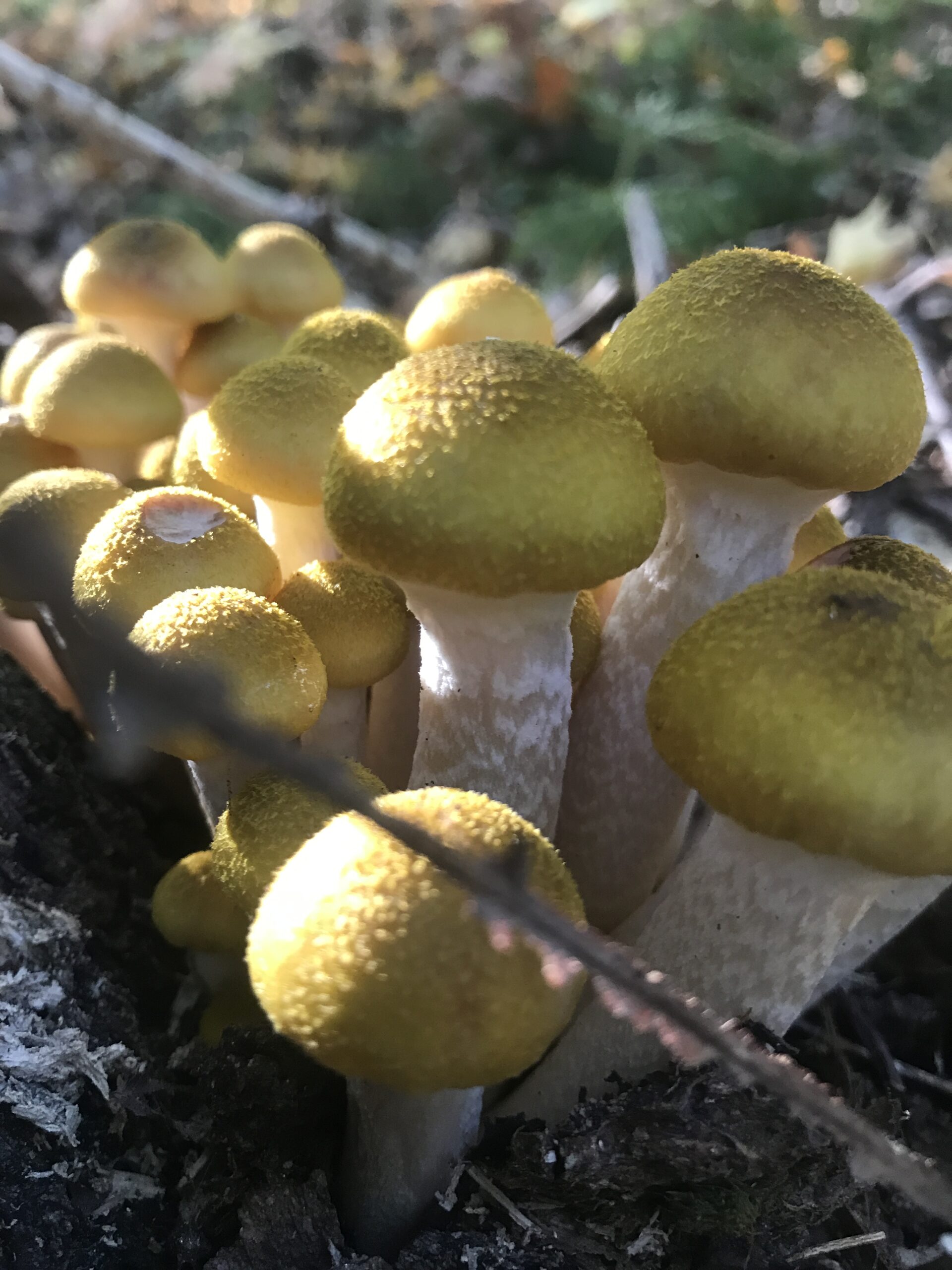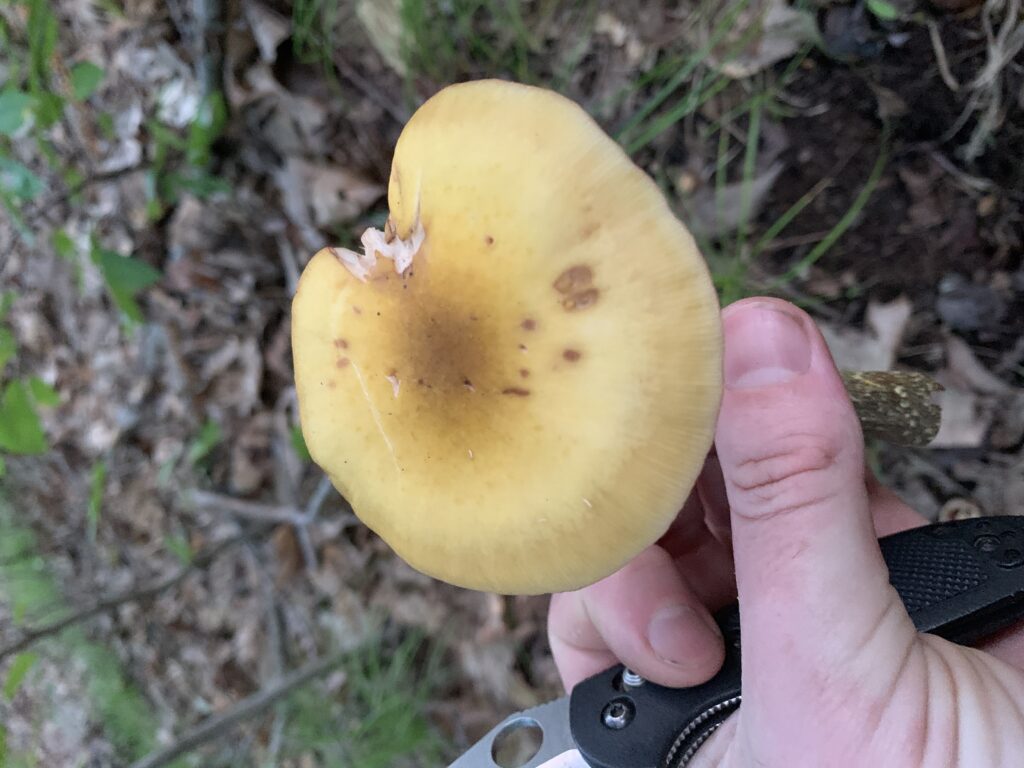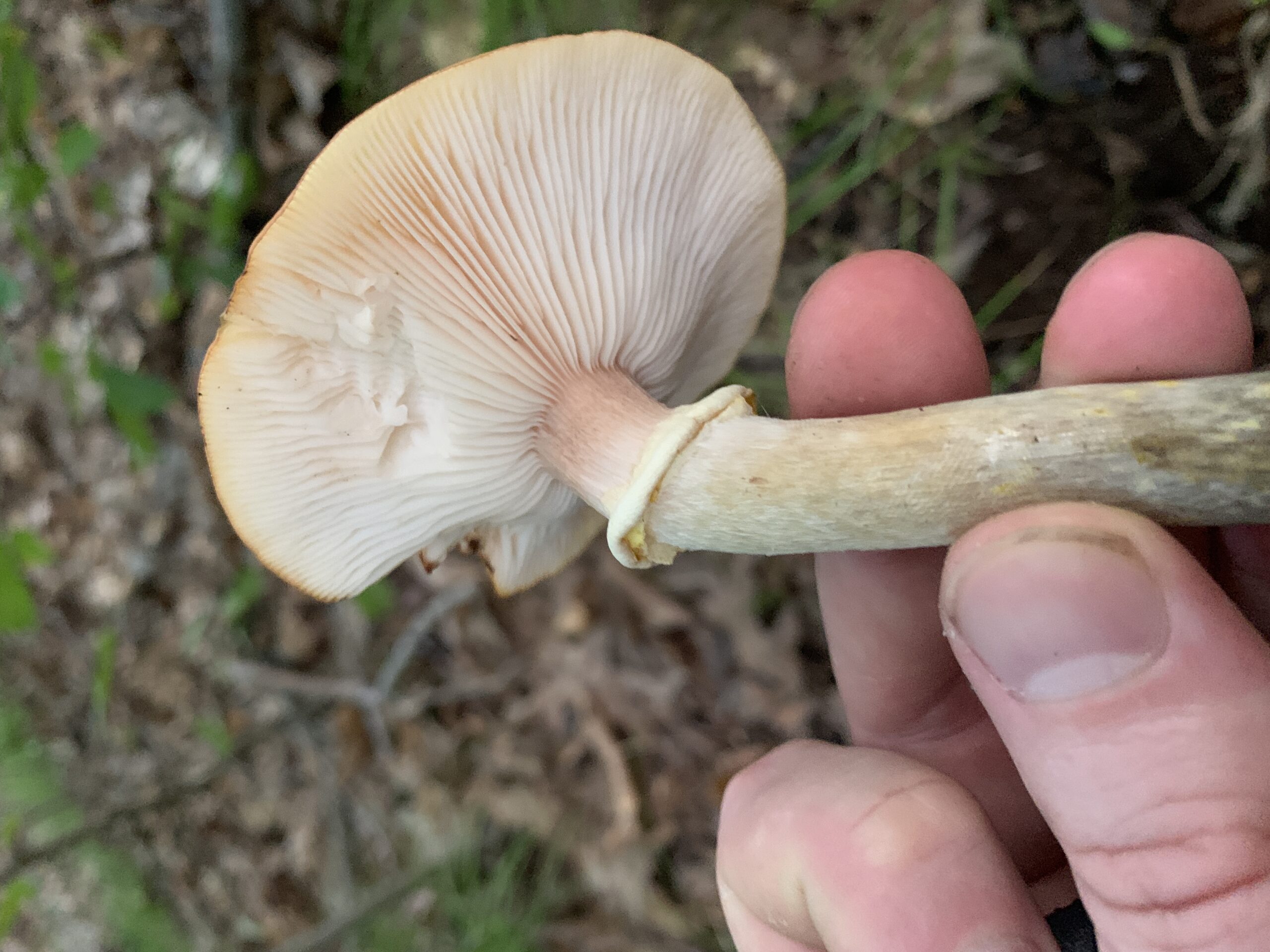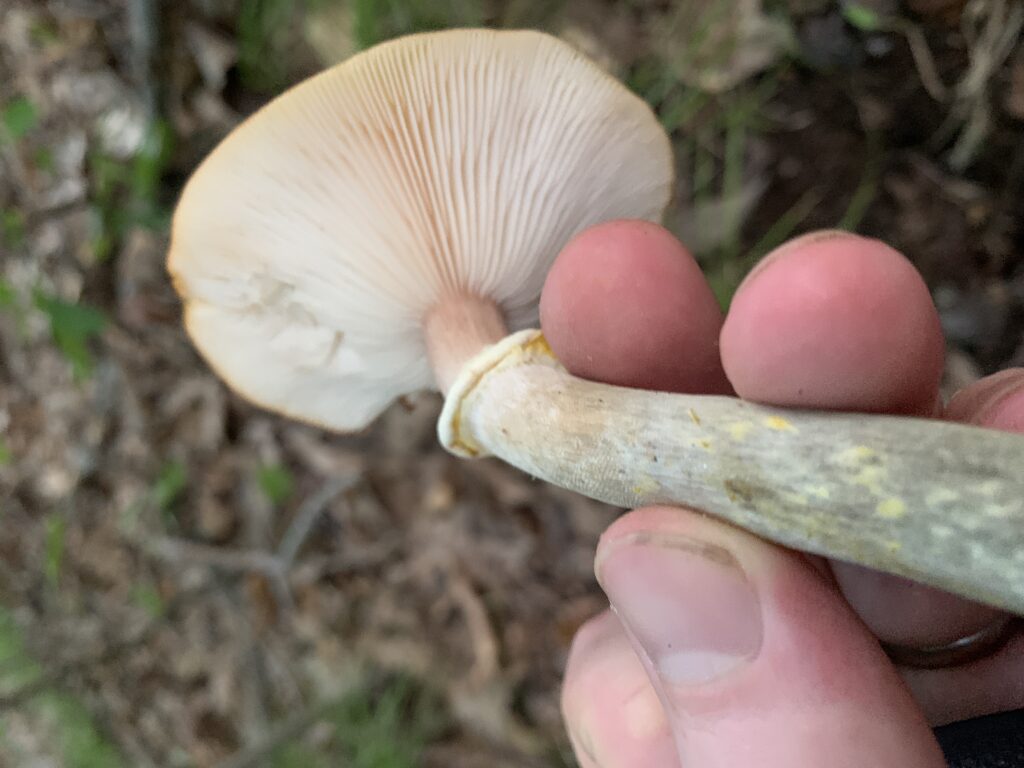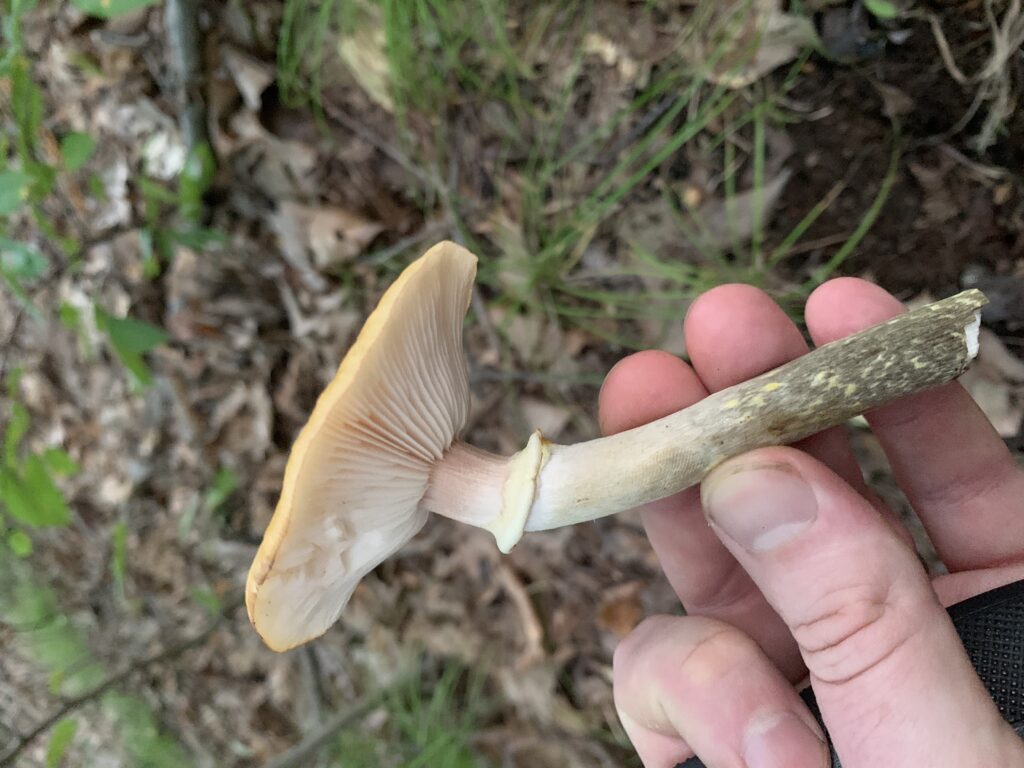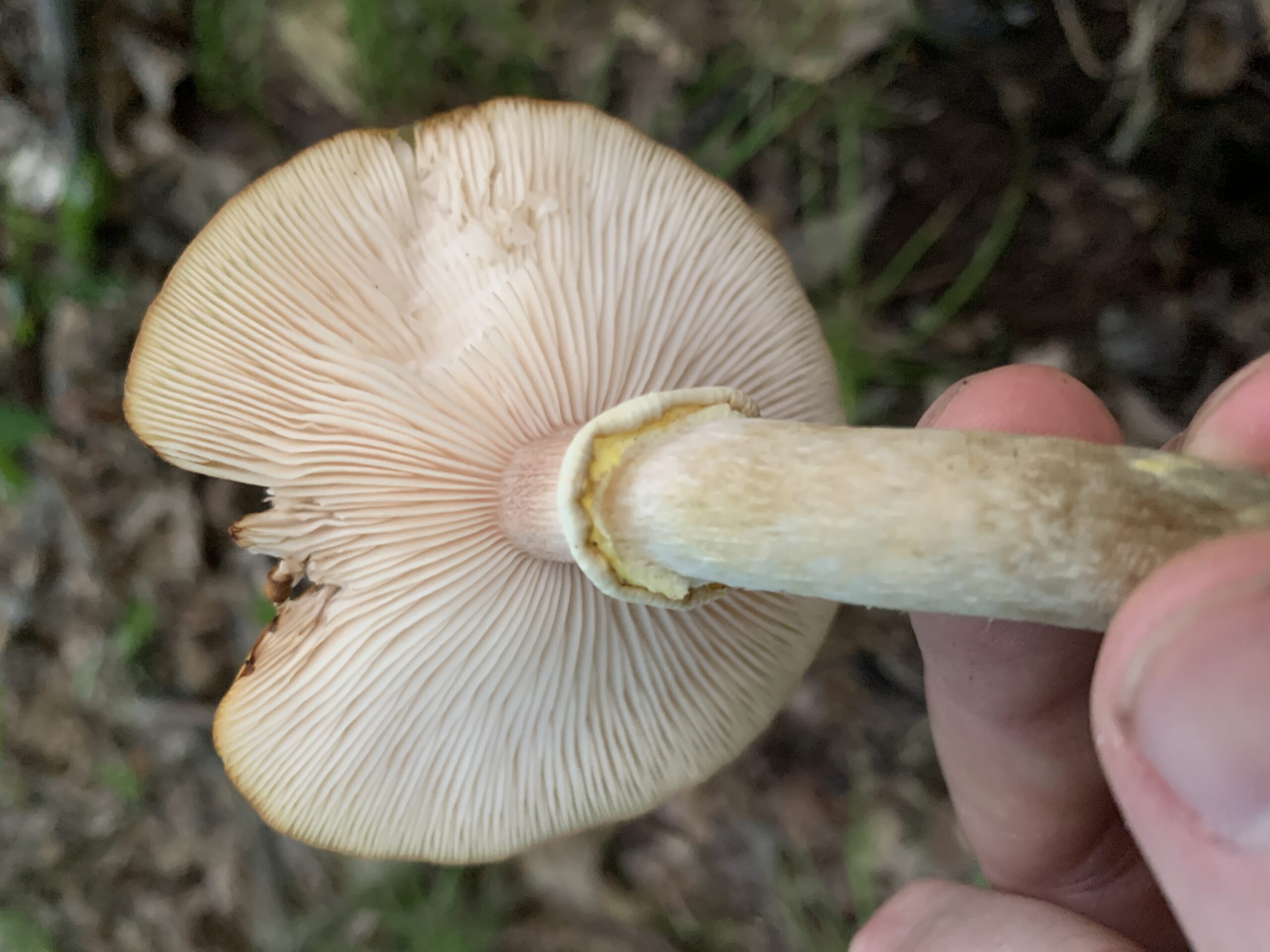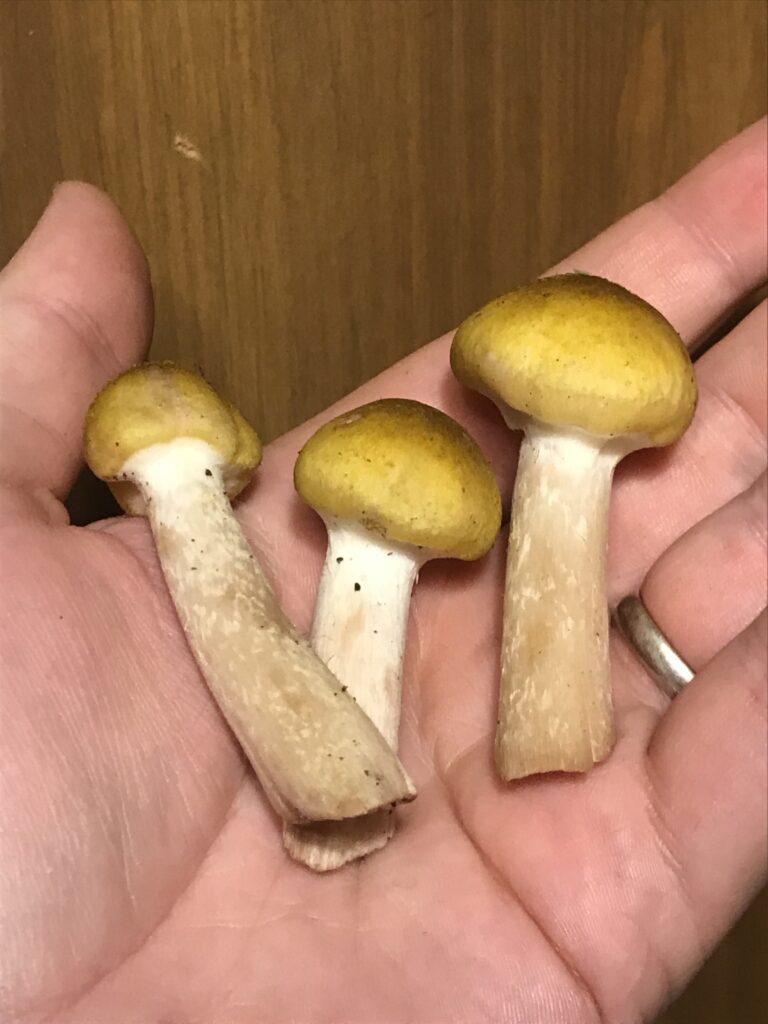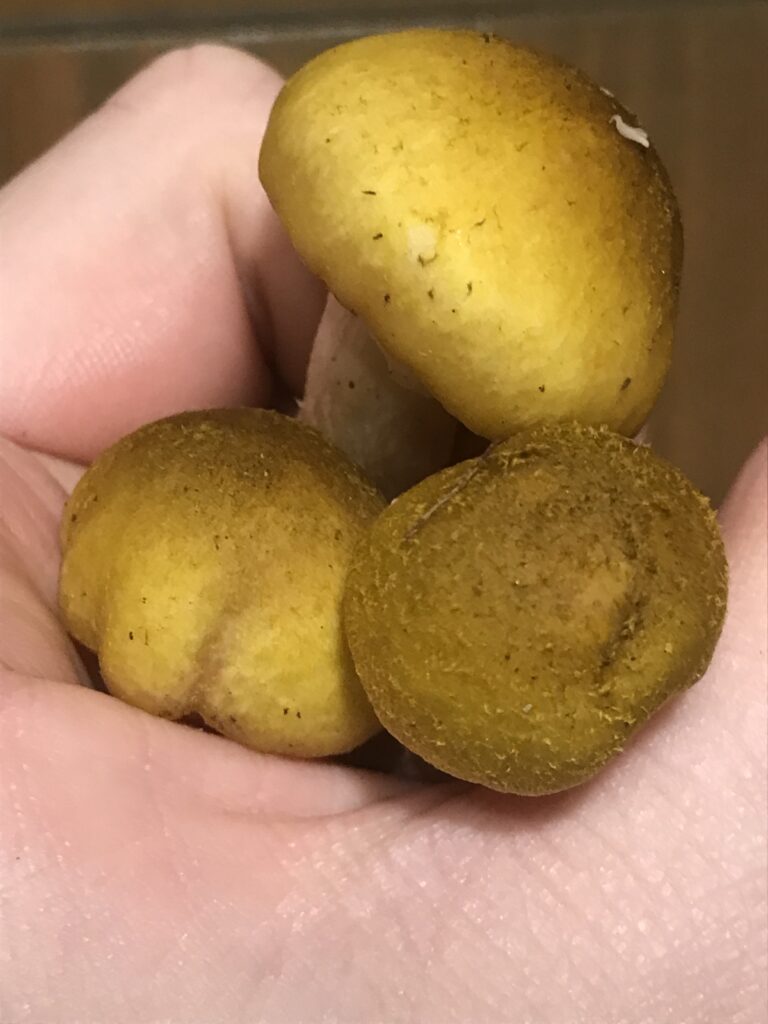| Ecology & Habitat | Parasitic, Clustered (arising from a common base) Commonly found growing on dead or decaying wood, stumps, and roots of trees. Both Hardwood and conifers alike, as well as shrubs. |
| Edibility, Taste & Odor | Edible |
| Cap | Honey-colored cap, bruises brown or reddish brown. Covered with small hairs or fibers. |
| Gills | Yellowish-white gills that bruise brown |
| Stem | White Stem, with yellowish and brownish tones, bruises brown, and will become grayish brown near the base as it ages. |
| Partial Veil | The ring or annulus of this fungus is white with a yellow edge or underside, and has a smooth texture |
| Spores | White |
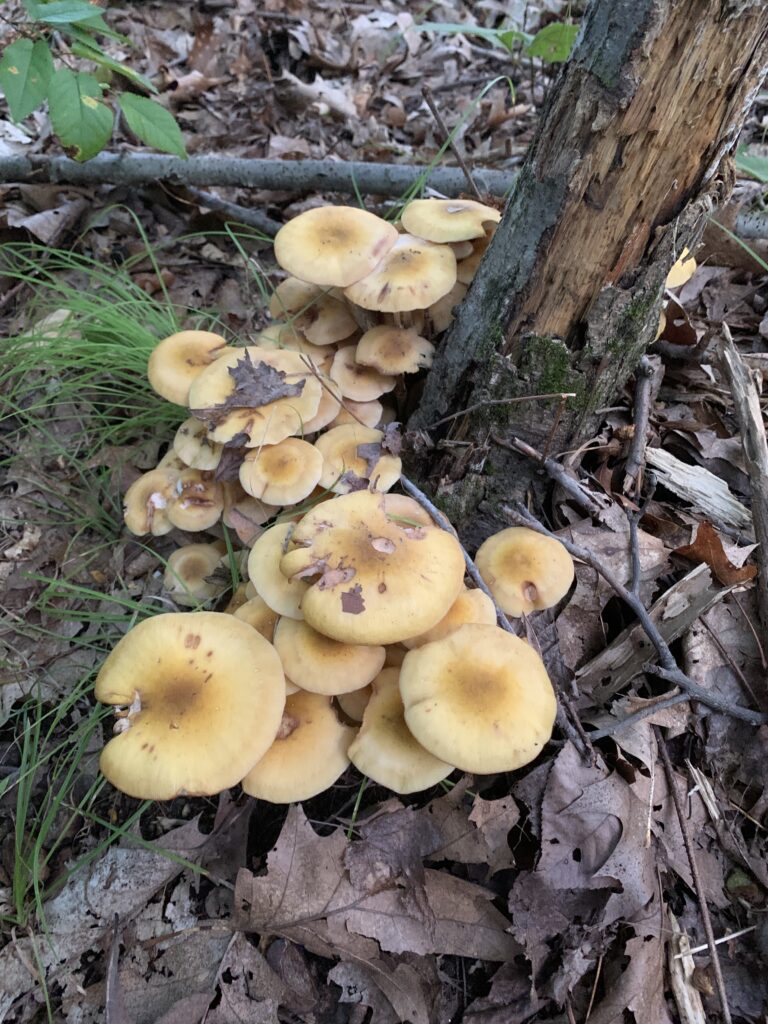
Armillaria mellea, also known as the honey mushroom or the yellow honey mushroom, is characterized by its large, honey-colored cap with small dark fibers on the surface radiating outwards from the center. The young mushroom cap is quite yellow but gradually fades to a honey color as it ages. It has white to honey-colored gills that release white spores. The stem is typically slender but tough and tapers at the base where they attach to one another in large clusters. The stem will also have a substantial ring left from the partial veil. While the veil and most of the ring will be whitish, it will frequently have a yellow edge or yellow underside, similar in color to the young cap. On older specimens, the stem may darken near the base of the cluster. The flesh itself is white, but when cut, it may stain reddish brown. This isn’t a characteristic that I often hear about or read about, but it seems to be a common feature across other species of Armillaria mushrooms.
It’s not considered a beginner mushroom because it shares features with some deadly mushrooms (white gills, white spores, and a ring on the stem). It is also commonly said that the Deadly Galerina is a poisonous look-alike because sometimes the caps of Armillaria mellea are not as distinctly yellow, and the brownish ones may look similar to Galerina, which also can have honey-colored gills. However, I think they’re mainly referring to Armillaria gallica with that comparison. Armillaria gallica is more similar to Galerina than Armillaria mellea is. In most cases, Armillaria mellea is bright yellow when young, and it’s quite common to hear of someone foraging them here in Connecticut. They can be quite abundant in the fall. So, it may take a little time to be certain that you have the right mushroom, but they’re a good find once you are comfortable with them.
As far as edibility goes, I like them the best when young and more tender. I prefer the small unopened caps; however, a mature cap can also be chopped into bite-size pieces for a similar effect. Some people have difficulty digesting them due to the high chitin content which makes them tougher than the average mushroom. But chitin is also what gives them the interesting texture. So, they say to boil them for about ten minutes to help break down the chitin. In any case, they are often quite abundant, and I will freeze them for winter soups. They’re quite a reliable mushroom if you’re into foraging.
On a side note, this species of fungus belongs to the family Physalacriaceae. I have never attempted to pronounce that name. I haven’t even given much effort to just reading it because it’s such a mouthful. Generally speaking, the genus and species are all that is needed to communicate what mushroom you’re talking about. So, the family name is more for mycologist than foragers. However, in writing this, I became intrigued and attempted to look it up. Apparently “Physal” translates to “bladder”, and “acria” translates to “sour”. I have no idea what they’re getting at with a name like that. But I’m just using google as my guide. If any mycologists or mushroom geeks out there know the answer, as a fellow mushroom geek, I would love to hear from you.
